Identifying Challenges to the Commercial Viability of Direct Powder Rolled Titanium: A Systematic Review and Market Analysis
Abstract
:1. Introduction
2. Characterization of Direct Powder Rolled Titanium Metal Strip
2.1. Strip Thickness
2.2. Chlorine Levels
2.2.1. Sponge Fines
2.2.2. Hydride–Dehydride Powder (HDH)
2.2.3. Titanium Hydride (TiH2)
2.3. Oxygen Levels
3. Mechanical Properties of Direct Powder Rolled Titanium Metal Strip
- DPR followed by sintering only, or sintering + cold/hot rolling + annealing (green markers).
- CIP/die pressing followed by sintering only (white markers).
- TiH2 CIP/die pressing + sintering only (blue markers).
- TiH2 CIP/die pressing + sintering + hot roll + anneal (purple markers).
4. Wrought Product Price and Market Analysis
- A width of 660 mm or less (based on the widest mill, used by ADMA Inc, for DPR to date).
- A width of 120 mm or more. This excludes very thin products such as ribbon.
- A length of 500 mm or more. This limits price variability from customized products (sold at a premium) or offcuts (sold at a discount).
- There is overcapacity and an oversupply of sponge and mill product globally, but particularly so in China, which has seen a slowdown in demand [48].
- Although China is the largest producer of sponge, most of it is consumed domestically [49]. Of the mill product and sponge that is exported by China, it is predominantly for industrial applications [50], whereas the US or global sponge and mill markets are driven predominantly by aerospace applications [51,52]. Aerospace grade ingot and slab is typically manufactured via double or triple melting (known as VAR [53]), whereas industrial-grade material is often manufactured via melting in a cold hearth furnace (electron beam or plasma arc), which is lower in cost due to the ability to include a higher percentage of scrap [54]. Industrial mill products do not need to adhere to stringent aerospace specifications, which lowers the price. In addition, the industrial titanium market experiences price pressure from other metals competing for industrial applications [55].
- High-grade aerospace product from the US and Europe.
- Industrial grade product from China.
5. Powder Price and Market Analysis
6. Feasible Price Range for Titanium DPR Product
7. Potential DPR Product Applications
- Unlike aerospace, medical, and pressure vessel applications, the quality standards and expectations for products used in industrial heat exchangers and piping are less stringent, offering a natural market entry point.
- The dimensional requirements are within the process capabilities of DPR (width <610 mm and thickness <3 mm).
- Heat exchangers and piping are the most common applications for pure titanium and flat mill product (welded CP titanium tubing is deemed an important intermediate product60). Therefore, the market is large enough to warrant commercial potential.
8. DPR Strip Fabricability
8.1. Formability
8.2. Weldability
- Armstrong powder (low chlorine, developmental powder).
- HDH powder made from revert scrap (ingot derived and therefore low in chlorine).
- TiH2 (Ti-6Al-4V plate purchased from ADMA with low Cl due to “cleaning” effect of TiH2).
9. Conclusions
Author Contributions
Funding
Acknowledgments
Conflicts of Interest
References
- Dube, R.K. Metal strip via roll compaction and related powder metallurgy routes. Int. Mater. Rev. 1990, 35, 253–292. [Google Scholar] [CrossRef]
- Hong, J.K.; Lee, C.H.; Kim, J.H.; Yeom, J.T.; Park, N.K. Ti strip properties fabricated by powder rolling method. Surf. Rev. Lett. 2010, 17, 229–234. [Google Scholar] [CrossRef]
- Chikosha, S.; Shabalala, T.C.; Chikwanda, H.K. Effect of particle morphology and size on roll compaction of Ti-based powders. Powder Technol. 2014, 264, 310–319. [Google Scholar] [CrossRef]
- Patton, W.L. Metal Powder Rolling Process. U.S. Patent 3,530,210, 22 September 1970. [Google Scholar]
- Park, N.K.; Lee, C.H.; Kim, J.H.; Hong, J.K. Characteristics of powder-rolled and sintered sheets made from HDH Ti powders. Key Eng. Mater. 2012, 520, 281–288. [Google Scholar] [CrossRef]
- Gogaev, K.A.; Nazarenko, V.A.; Voropaev, V.A.; Podrezov, Y.N.; Verbilo, D.G.; Koryak, O.S.; Okun, I.Y. Mechanical properties of powder titanium at different production stages. V. Properties of a titanium strip produced by powder rolling. Powder Metall. Met. Ceram. 2009, 48, 652–658. [Google Scholar] [CrossRef]
- Gogaev, K.A.; Voropaev, V.S.; Kalutskii, G.Y.; Podrezov, Y.N.; Verbilo, D.G.; Koryak, O.S. Production of titanium powder sheets by asymmetric rolling. Powder Metall. Met. Ceram. 2013, 51, 509–517. [Google Scholar] [CrossRef]
- Vinogradov, G.A. Method of calculating the density and thickness of porous rolled strip. Powder Metall. Met. Ceram. 1963, 2, 356–360. [Google Scholar] [CrossRef]
- Ro, D.H.; Toaz, M.W.; Moxson, V.S. The direct powder-rolling process for producing thin metal strip. JOM J. Miner. Met. Mater. Soc. 1983, 35, 34–39. [Google Scholar] [CrossRef]
- Stone, N.A.; Wilson, R.; Yousuff, M.; Gibson, M. Titanium Flat Product Production. U.S. Patent 8,790,572, 29 July 2014. [Google Scholar]
- Cantin, G.M.D.; Stone, N.A.; Alexander, D.L.J.; Gibson, M.A.; Ritchie, D.; Wilson, R.; Yousuff, M.; Rajakumar, V.; Rogers, K. Production of Ti-6Al-4V Strip by Direct Rolling of Blended Elemental Powder. Mater. Sci. Forum 2010, 654, 807–810. [Google Scholar] [CrossRef]
- Zhang, Y. A Study of Direct Powder Rolling Route for CP-Titanium. Master’s Thesis, University of Cape Town, Cape Town, South Africa, 2015. [Google Scholar]
- Peter, W.H.; Muth, T.; Chen, W.; Yamamoto, Y.; Jolly, B.; Stone, N.A.; Cantin, G.M.D.; Barnes, J.; Paliwal, M.; Smith, R.; et al. Titanium sheet fabricated from powder for industrial applications. JOM 2012, 64, 566–571. [Google Scholar] [CrossRef]
- Moxson, V.S.; Duz, V.A. Process of Direct Powder Rolling of Blended Titanium Alloys, Titanium Matrix Composites, and Titanium Aluminides. U.S. Patent 7,311,873, 25 December 2007. [Google Scholar]
- Araci, K.; Mangabhai, D.; Akhtar, K. Production of titanium by the Armstrong Process®. In Titanium Powder Metallurgy, Science, Technology and Applications; Elsevier: Amsterdam, The Netherlands, 2015; pp. 149–162. [Google Scholar]
- Doblin, C.; Cantin, D.; Gulizia, S. Processing TiROTM powder for strip production and other powder metallurgy applications. In Proceedings of the TiDA International Titanium Powder Processing Conference, Hamilton, New Zealand, 2–4 December 2013. [Google Scholar]
- Mal’tsev, M.V. Investigation of metal powder rolling. Powder Metall. Met. Ceram. 1971, 10, 445–448. [Google Scholar]
- Katrus, O.A.; Otrok, A.I. Compactibility of metal powders in rolling. Sov. Powder Metall. Met. Ceram. 1971, 10, 623–627. [Google Scholar]
- Engineers, NIIR Board of Consultants. The Complete Technology Book on Hot Rolling of Steel; NIIR: Moscow, Russia, 2010. [Google Scholar]
- Titanium: Past, Present, and Future; National Research Council: Washington, DC, USA, 1983.
- Duz, V.A.; Moxson, V.S. The direct powder rolling process for producing titanium and titanium alloy foils, sheets and plates. Mater. Sci. Technol. 2005, 4, 45–53. [Google Scholar]
- Robertson, I.M.; Schaffer, G.B. Some effects of particle size on the sintering of titanium and a master sintering curve model. Metall. Mater. Trans. A Phys. Metall. Mater. Sci. 2009, 40, 1968–1979. [Google Scholar] [CrossRef]
- Froes, F.H.; Eylon, D.; Eichelman, G.E.; Burte, H.M. Developments in titanium powder metallurgy. JOM 1980, 32, 47–54. [Google Scholar] [CrossRef]
- Withers, J.C.; Cardarelli, F.; Laughlin, J.P.; Loutfy, R.O. Recent improvements for electrowinning titanium metal from composite anodes. In Proceedings of the International Round table on Titanium Production in Molten Salts, Cologne, Germany, 2–4 March 2008. [Google Scholar]
- Mellor, I.; Doughty, G. Novel and emerging routes for titanium powder production—An overview. Key Eng. Mater. 2016, 704, 271. [Google Scholar] [CrossRef] [Green Version]
- Kosemura, S.; Fukasawa, E.; Ampo, S.; Shiraki, T.; Sannohe, T. Technology trend of titanium sponge and ingot production. Nippon Steel Tech. Rep. 2002, 85, 31–35. [Google Scholar]
- Cardarelli, F. Materials Handbook: A Concise Desktop Reference; Springer Science & Business Media: New York, NY, USA, 2008. [Google Scholar]
- Donachie, M.J. Introduction to Selection of Titanium Alloys. In Titanium: A Technical Guide, 2nd ed.; ASM International: Novelty, OH, USA, 2000; Volume 180, pp. 5–11. [Google Scholar]
- McCracken, C.G.; Motchenbacher, C.; Barbis, D.P. Review of titanium powder production methods. Int. J. Powder Metall. 2010, 46, 19–26. [Google Scholar]
- Mwamba, I.A.; Chown, L.H. The use of titanium hydride in blending and mechanical alloying of Ti-Al alloys. J. South. African Inst. Min. Metall. 2011, 111, 159–165. [Google Scholar]
- Duz, V.; Matviychuk, M.; Klevtsov, A.; Moxson, V. Industrial application of titanium hydride powder. Met. Powder Rep. 2017, 72, 30–38. [Google Scholar] [CrossRef]
- Ivasishin, O.; Moxson, V. Low-cost titanium hydride powder metallurgy. In Titanium Powder Metallurgy, Science, Technology and Applications; Butterworth-Heinemann: Oxford, UK, 2015; pp. 124–128. [Google Scholar]
- Moody, N.R.; Garrison, W.M.; Smugeresky, J.E.; Costa, J.E. The role of inclusion and pore content on the fracture toughness of powder-processed blended elemental titanium alloys. Metall. Trans. A 1993, 24, 161–174. [Google Scholar] [CrossRef]
- Sam Froes, F.H.; Qian, M. A perspective on the future of titanium powder metallurgy. Titan. Powder Metall. Sci. Technol. Appl. 2015, 602–608. [Google Scholar] [CrossRef]
- Yan, M.; Tang, H.P.; Qian, M. Scavenging of oxygen and chlorine from powder metallurgy (PM) titanium and titanium alloys. Titan. Powder Metall. Sci. Technol. Appl. 2015, 253–276. [Google Scholar] [CrossRef]
- Fan, Z.; Niu, H.J.; Cantor, B.; Miodownik, A.P.; Saito, T. Effect of Cl on microstructure and mechanical properties of in situ Ti/TiB MMCs produced by a blended elemental powder metallurgy method. J. Microsc. 1997, 185, 157–167. [Google Scholar] [CrossRef]
- Jacobsen, L.E.; Benish, A.J. Titanium Alloy. U.S. Patent 8,894,738, 25 November 2014. [Google Scholar]
- Muth, T.R.; Yamamoto, Y.; Frederick, D.A.; Contescu, C.I.; Chen, W.; Lim, Y.C.; Peter, W.H.; Feng, Z. Causal factors of weld porosity in gas tungsten arc welding of powder-metallurgy-produced titanium alloys. JOM 2013, 65, 643–651. [Google Scholar] [CrossRef]
- Kumar, P.; Ravi Chandran, K.S.; Cao, F.; Koopman, M.; Fang, Z.Z. The nature of tensile ductility as controlled by extreme-sized pores in powder metallurgy Ti-6Al-4V alloy. Metall. Mater. Trans. A Phys. Metall. Mater. Sci. 2016, 47, 2150–2161. [Google Scholar] [CrossRef]
- Dekhtyar, A.I.; Ivasishin, O.M.; Moiseeva, I.V.; Prokudina, V.K.; Savvakin, D.G.; Sychev, A.E. The mechanical properties of compact titanium produced from titanium hydride powders using self-propagating high-temperature synthesis. Powder Metall. Met. Ceram. 2015, 53, 549–556. [Google Scholar] [CrossRef]
- Baril, E.; Lefebvre, L.P.; Thomas, Y. Interstitial elements in titanium powder metallurgy: Sources and control. Powder Metall. 2011, 54, 183–186. [Google Scholar] [CrossRef] [Green Version]
- Ivasishin, O.M.; Savvakin, D.G.; Gumenyak, M.M.; Bondarchuk, O.B. Role of surface contamination in titanium PM. Key Eng. Mater. 2012, 520, 121–132. [Google Scholar] [CrossRef]
- Barbis, D.P.; Gasior, R.M.; Walker, G.P.; Capone, J.A.; Schaeffer, T.S. Titanium powders from the hydride-dehydride process. In Titanium Powder Metallurgy, Science, Technology and Applications; Elsevier: Waltham, MA, USA, 2015. [Google Scholar]
- Ivasishin, O.M.; Savvakin, D.G.; Moxson, V.S.; Gumenyak, M.M. Manufacture of Near-Net Shape Titanium Alloy Articles from Metal Powders by Sintering with Presence of Atomic Hydrogen. U.S. Patent 9,777,347 B2, 3 October 2017. [Google Scholar]
- Cantin, G.M.D.; Gibson, M.A. Titanium sheet fabrication from powder. Titan. Powder Metall. Sci. Technol. Appl. 2015, 383–403. [Google Scholar] [CrossRef]
- Beddoes, J.; Bibby, M. Principles of Metal Manufacturing Processes; Butterworth-Heinemann: Oxford, UK, 1999. [Google Scholar]
- Froes, F.H. Primary Working. In Titanium: Physical Metallurgy, Processing, and Applications; ASM International: Novelty, OH, USA, 2015. [Google Scholar]
- Mccoy, D. The Global Titanium Sponge Market Review; International Titanium Association: Orlando, FL, USA, 2015. [Google Scholar]
- World Titanium Industry Supply and Demand Overview. International Titanium Association. 2016. Available online: http://www.titanium.org/news/314739/World-Titanium-Industry-Supply--Demand-Overview.htm (accessed on 27 March 2020).
- Dewhurst, P. Titanium sponge supply: Past, present and future. In Proceedings of the Titanium 2013, Las Vegas, NV, USA, 6–9 October 2013. [Google Scholar]
- Titanium Metal. Outlook to 2029, 9th edition. Market Report—Roskill. Available online: https://roskill.com/market-report/titanium-metal/ (accessed on 20 March 2020).
- Bedinger, G.M. Titanium and titanium dioxide. In USGS Mineral Commodity Summaries 2016; USGS: Reston, VA, USA, 2016. [Google Scholar]
- Roskill Information Services. Titanium Metal Market Emerges from Past Excesses with More Changes Anticipated. 2017. Available online: https://roskill.com/news/titanium-metal-market-emerges-past-excesses-changes-anticipated/ (accessed on 15 January 2020).
- Holz, M.; Walker, G.P. Ti Facts; International Titanium Association Education Committee: Northglenn, Colorado, USA, 2011. [Google Scholar]
- AMM Staff. Double Trouble for Titanium Market|American Metal Market. 2013. Available online: http://www.amm.com/Article/3266122/Double-trouble-for-titanium-market.html (accessed on 27 March 2020).
- Liu, Y.; Chen, L.F.; Tang, H.P.; Liu, C.T.; Liu, B.; Huang, B.Y. Design of powder metallurgy titanium alloys and composites. Mater. Sci. Eng. A 2006, 418, 25–35. [Google Scholar] [CrossRef]
- German, R.M. Progress in titanium metal powder injection molding. Materials 2013, 6, 3641–3662. [Google Scholar] [CrossRef] [PubMed]
- Bannon, B.; Mild, E. Titanium Alloys for Biomaterial Application: An Overview. In Titanium Alloys in Surgical Implants; ASTM International: Novelty, OH, USA, 1983. [Google Scholar] [CrossRef]
- Allegheny Ludlum Technical Data Sheet—Corrosion-Resistant Titanium Alloys. Available online: http://www.titanmf.com/wp-content/uploads/docs/Titanium-Brochure-ATI.pdf (accessed on 27 March 2020).
- Lütjering, G.; Williams, J.C. Titanium; Springer Science & Business Media: New York, NY, USA, 2007. [Google Scholar]
- Welsch, G.; Boyer, R.; Collings, E.W. Materials Properties Handbook: Titanium Alloys; ASM International: Novelty, OH, USA, 1993. [Google Scholar]
- Chawla, S.L. Materials Selection for Corrosion Control; ASM International: Novelty, OH, USA, 1993. [Google Scholar]
- Smith, L.S.; Gittos, M.; Threadgill, P. Guide to Best Practice, Welding Titanium, A Designers and Users Handbook; Titanium Information Group (TWI): Cambridge, UK, 1999. [Google Scholar]
- Fujita, A.; Itsumi, Y.; Nakamoto, T.; Yamamoto, K. Pre-coated titanium sheet with excellent press formability. Kobelco Technol. Rev. 2011, 19–23. [Google Scholar]
- Heidersbach, R. Metallurgy and Corrosion Control in Oil and Gas Production; John Wiley & Sons: Hoboken, NJ, USA, 2013. [Google Scholar]
- Cassagne, T.B.; Houlle, P.; Zuili, D.; Bluzat, P.; Corrieu, J.M.; Larché, N. Replacing Titanium In Sea Water Plate Heat Exchangers. In Proceedings of the Corrosion 2010, San Antonio, TX, USA, 14–18 March 2010. [Google Scholar]
- Tranter SUPERCHANGER—Plate & Frame Heat Exchanger. Available online: https://www.tranter.com/products/superchanger-plate-frame-heat-exchanger/ (accessed on 27 March 2020).
- V2 CONSULTING LIMITED Titanium and Titanium Alloy Products Catalogue. Available online: http://v2cl.com/uploads/3/4/9/3/3493043/v2_consulting_limited_-_titanium_and_alloy_products.pdf (accessed on 27 March 2020).
- Thulukkanam, K. Heat Exchanger Design Handbook; CRC Press: Boca Raton, FL, USA, 2013. [Google Scholar]
- Beck, W. Superplastic forming and diffusion bonding of titanium and titanium alloys. In Titanium and Titanium Alloys: Fundamentals and Applications; Wiley-VCH: Hoboken, NJ, USA, 2003; pp. 273–288. [Google Scholar]
- Vallourec—Brochure: Heat Exchanger Tubes. Available online: http://wk.ixueshu.com/file/340307cfe378ea4f.html (accessed on 16 November 2017).
- Bloodworth, M. HASKEL—Tube Expansion Issues and Methods. Available online: http://www.haskel.com/wp-content/uploads/Tube-Expansion-Issues-and-Methods-copy.pdf (accessed on 15 March 2020).
- Smith, R.; Fichera, B.; O’Leary, J. The fabrication of brazed, lightweight titanium plate-fin heat exchangers for aircraft application. In Proceedings of the 3rd International Brazing and Soldering Conference; ASM International: Novelty, OH, USA, 2006; pp. 310–316. [Google Scholar]
- Lytron Total Thermal Solutions. Lightweight Titanium Heat Exchangers. Available online: http://www.lytron.com/Tools-and-Technical-Reference/Application-Notes/Lightweight-Titanium-Heat-Exchangers (accessed on 27 March 2020).
- Zong, Y.; Liu, P.; Guo, B.; Shan, D. Springback evaluation in hot v-bending of Ti-6Al-4V alloy sheets. Int. J. Adv. Manuf. Technol. 2015, 76, 577–585. [Google Scholar] [CrossRef]
- Duz, V.A.; Moxson, V.S.; Ivasishin, O.M. Powder Metallurgy of Titanium. In Proceedings of the Titanium 2009, Waikoloa, HI, USA, 13–16 September 2009. [Google Scholar]
- Kapranos, P.; Priestner, R. Review: Overview of metallic materials for heat exchangers for ocean thermal energy conversion systems. J. Mater. Sci. 1987, 22, 1141–1149. [Google Scholar] [CrossRef]
- Lunde, L.; Seiersten, M. Offshore Applications for Titanium Alloys. In Titanium and Titanium Alloys: Fundamentals and Applications; Wiley-VCH Verlag GmbH & Co. KGaA: Hoboken, NJ, USA, 2005; pp. 483–497. [Google Scholar]
- Mineral Commodity Summaries 2005; United States Geological Survey: Reston, VA, USA, 2005.
- Greenfield, M.A.; Geisendorfer, R.F.; Haggard, D.K.; Clark, L.P. Weldability of hot isostatically pressed prealloyed titanium 6AI-4V powder. Weld. Res. Suppl. 1977, 6, 143-s–148-s. [Google Scholar]
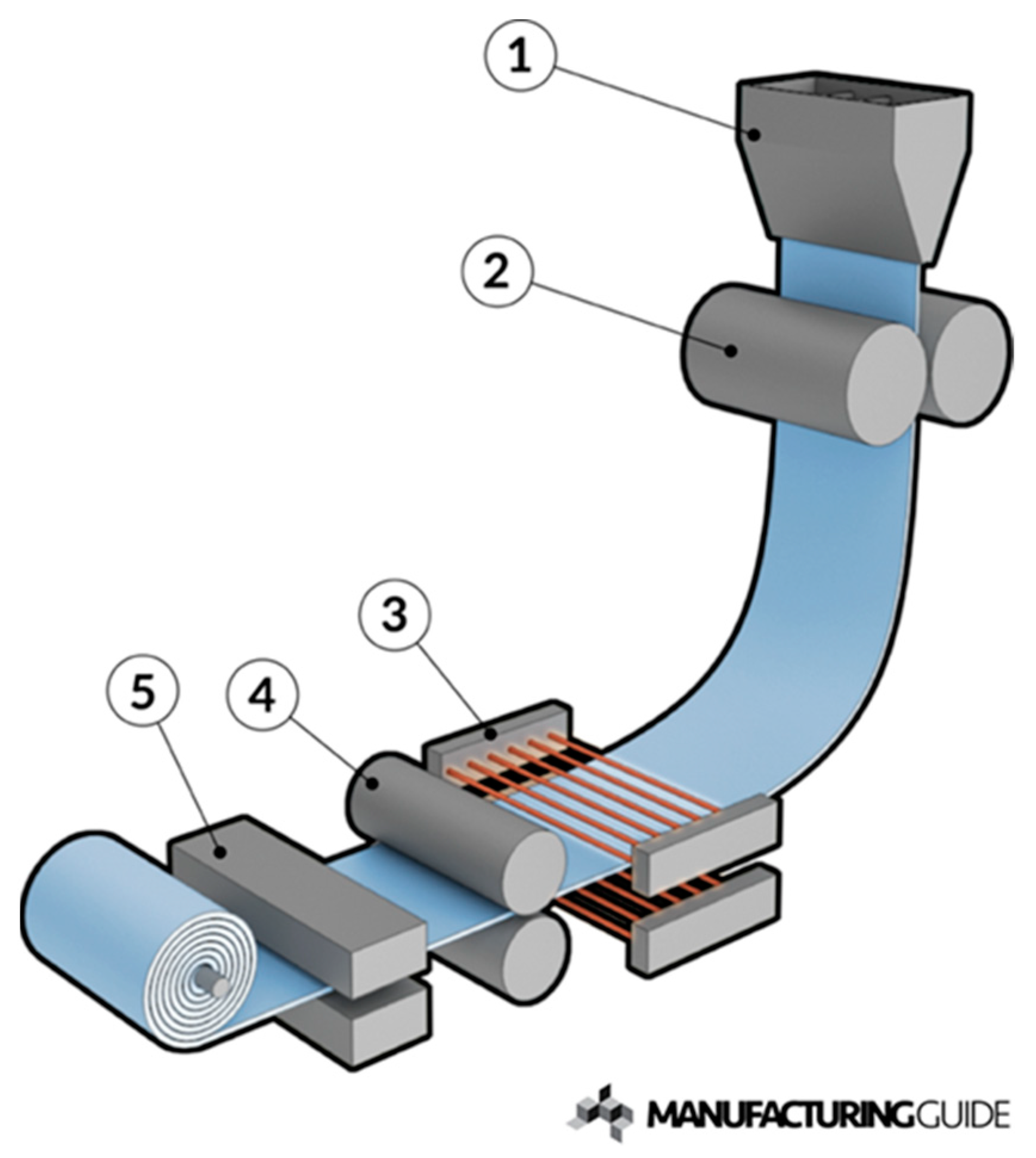
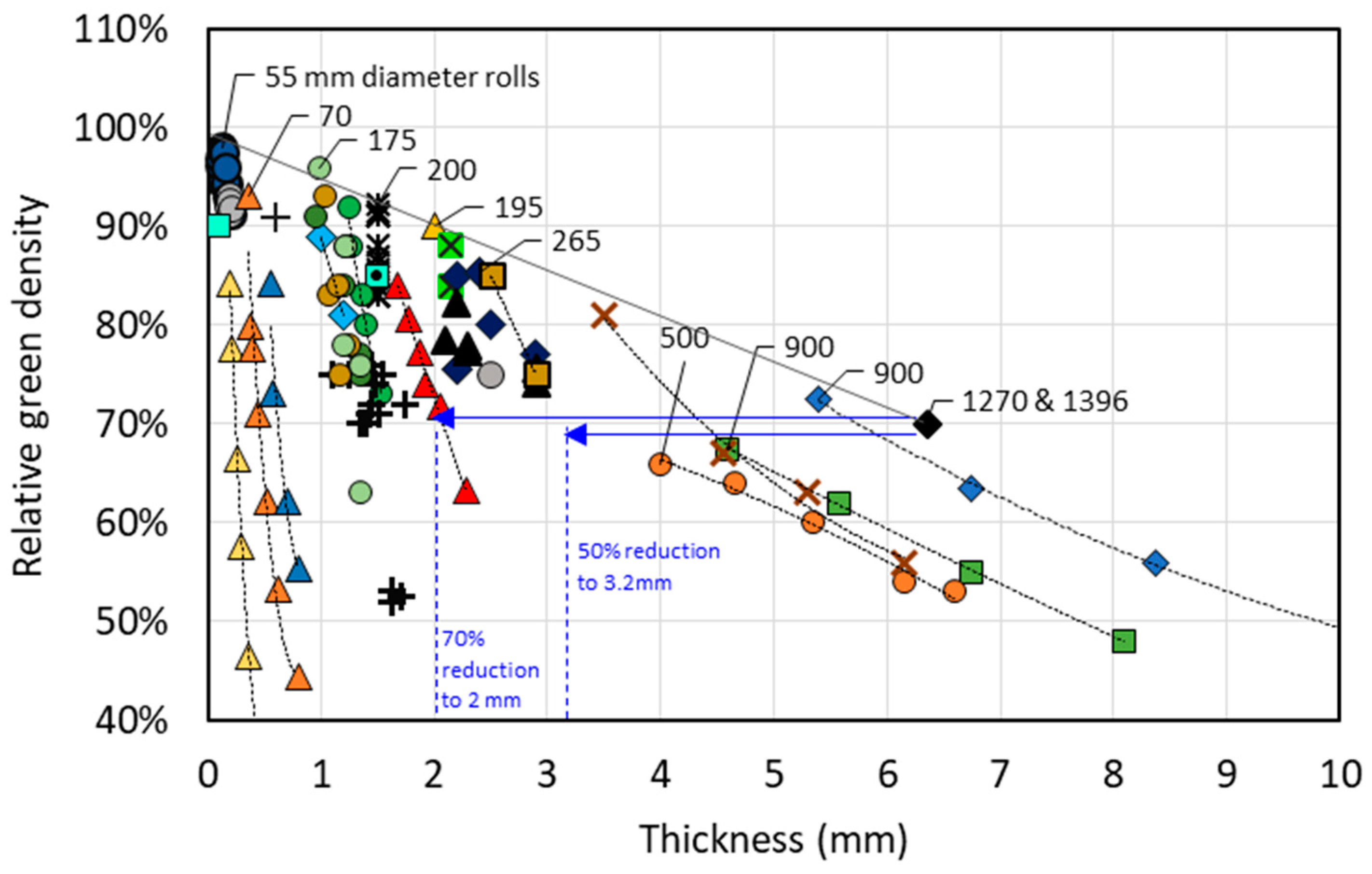
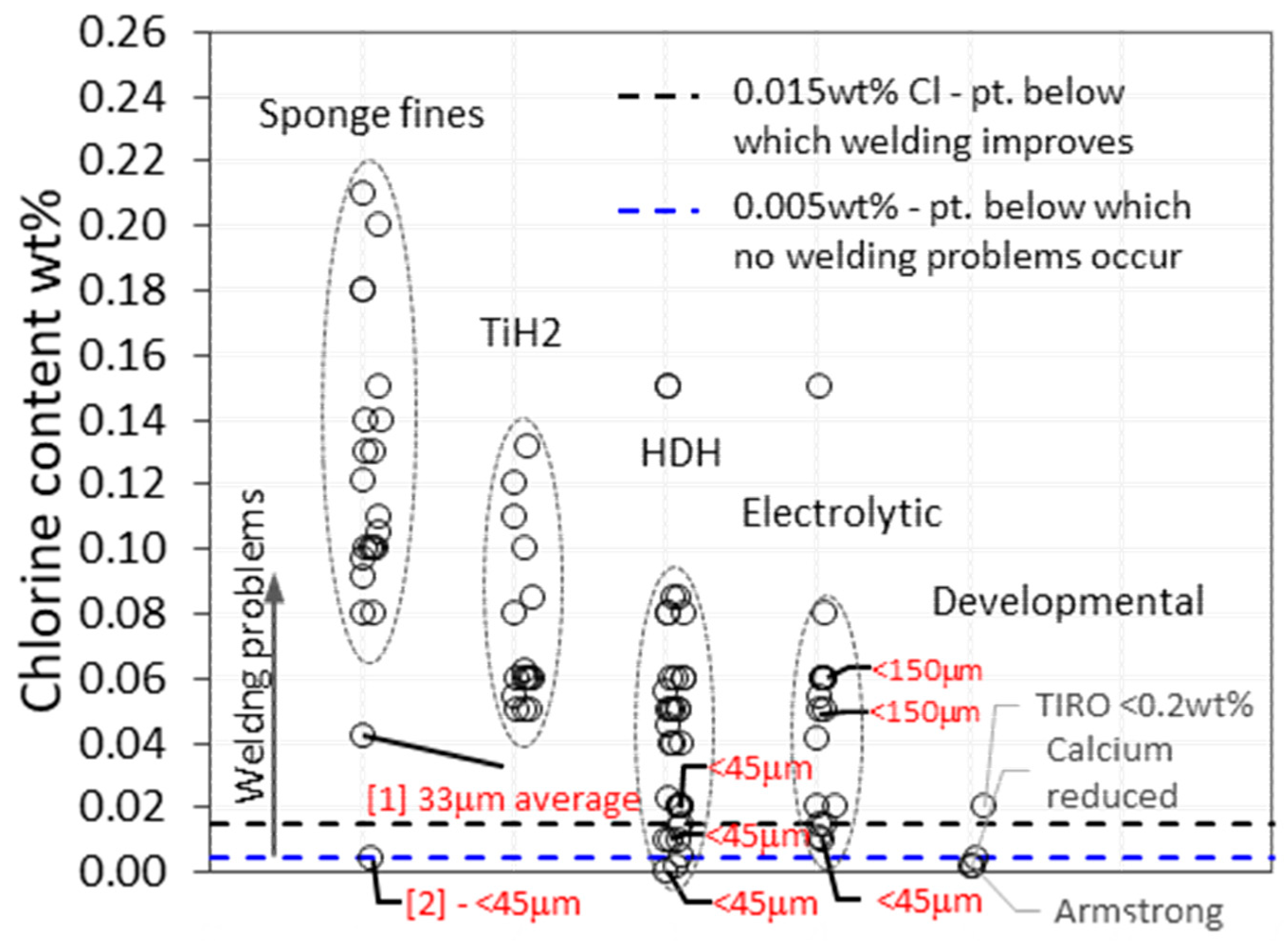
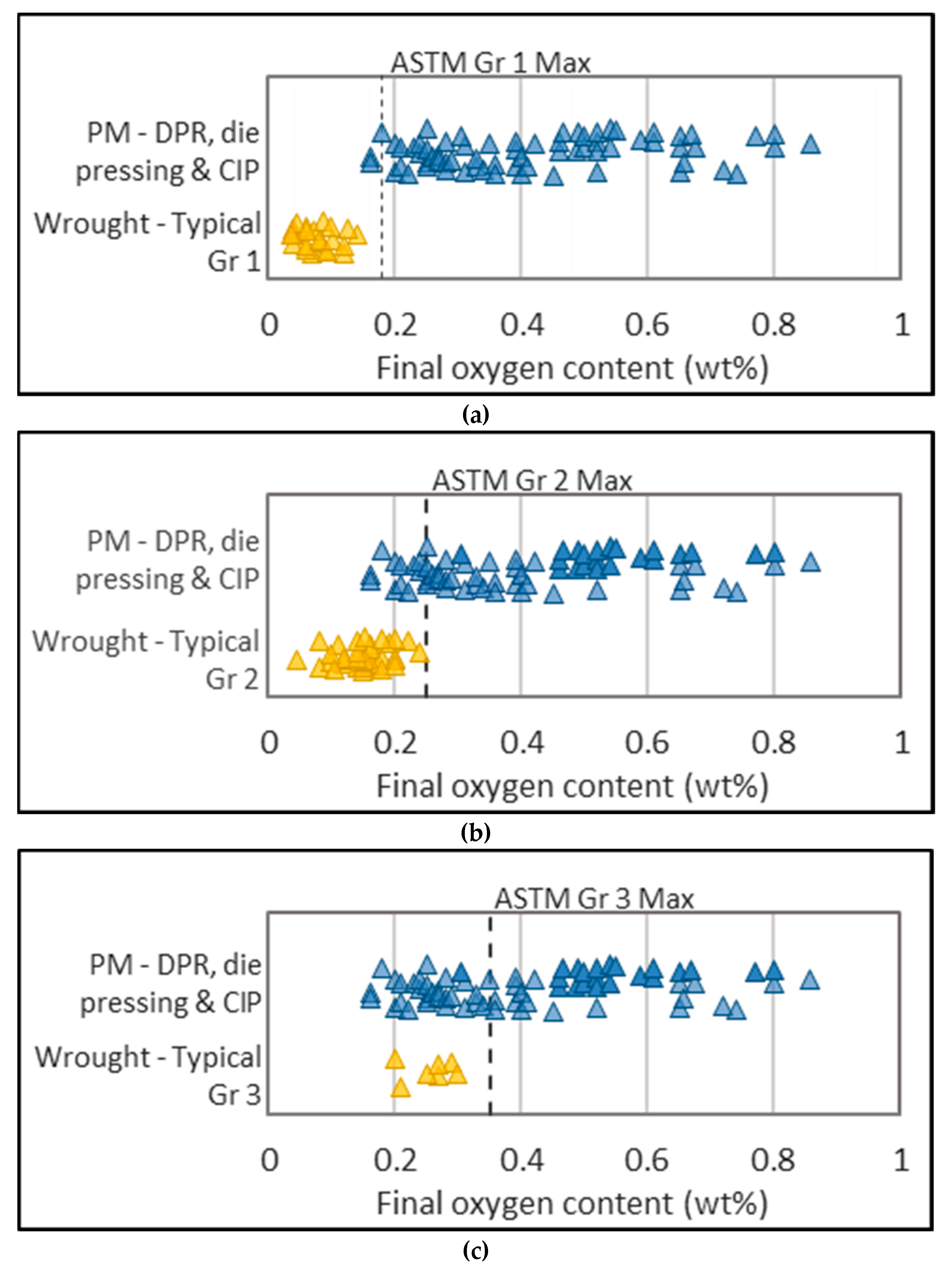
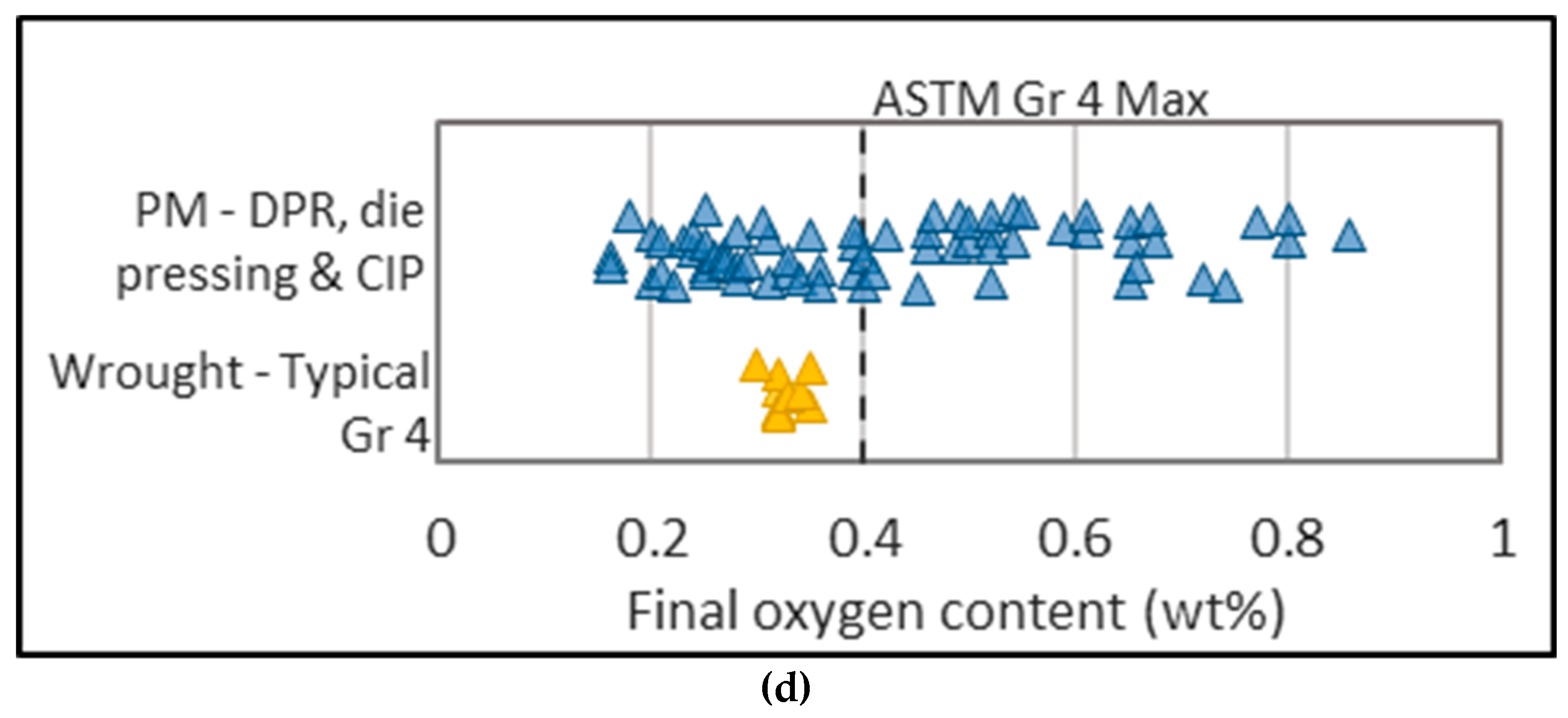


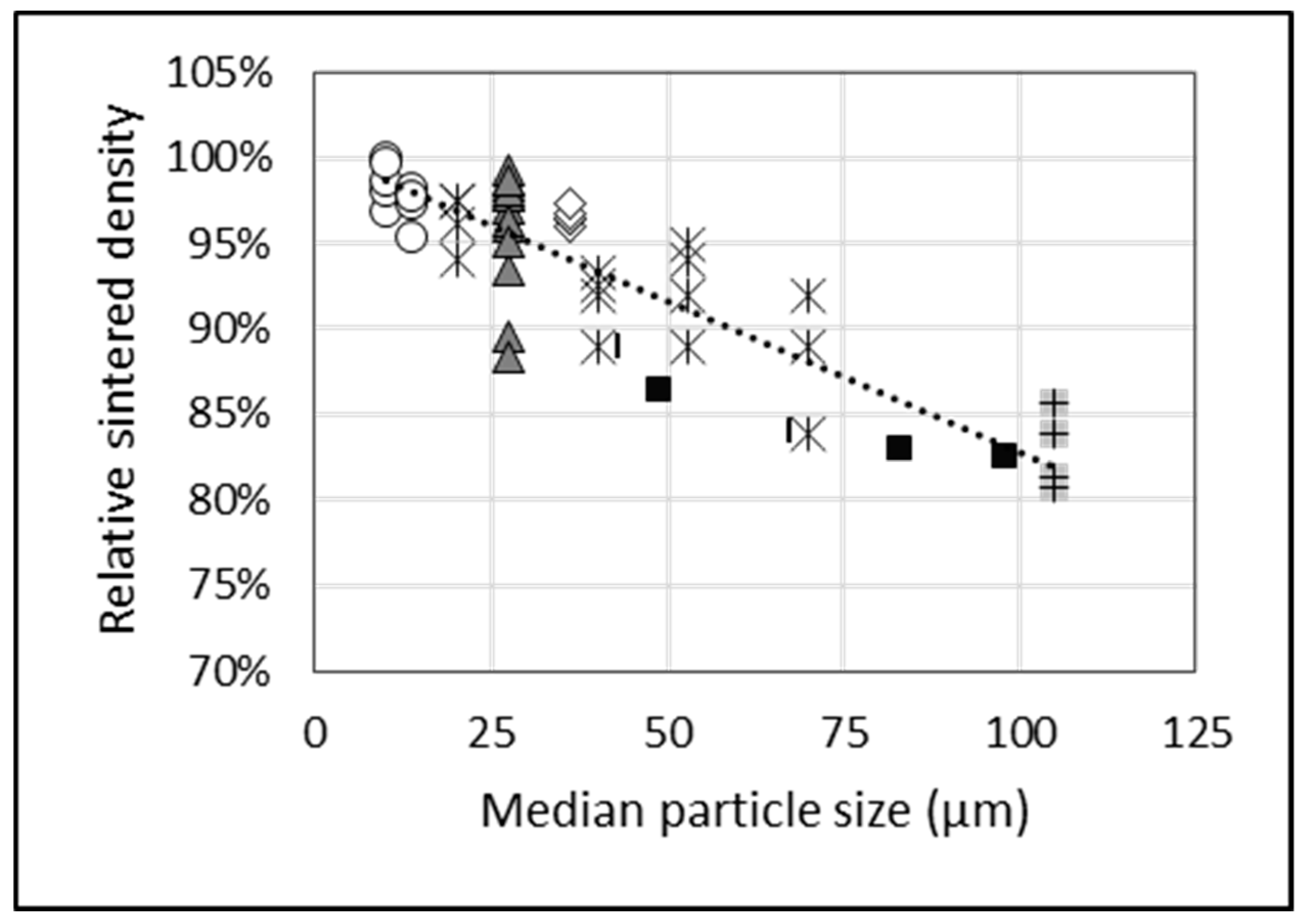
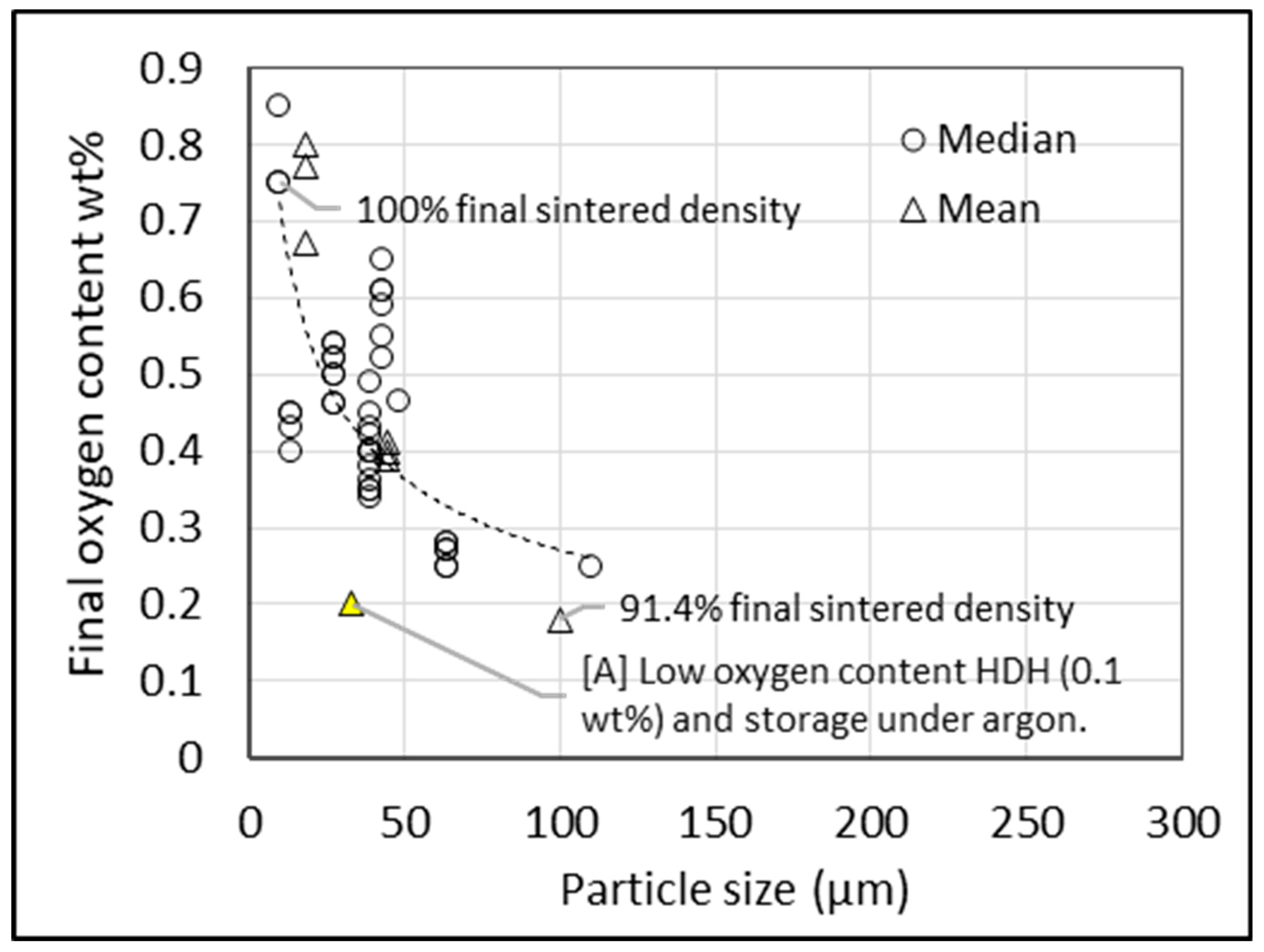
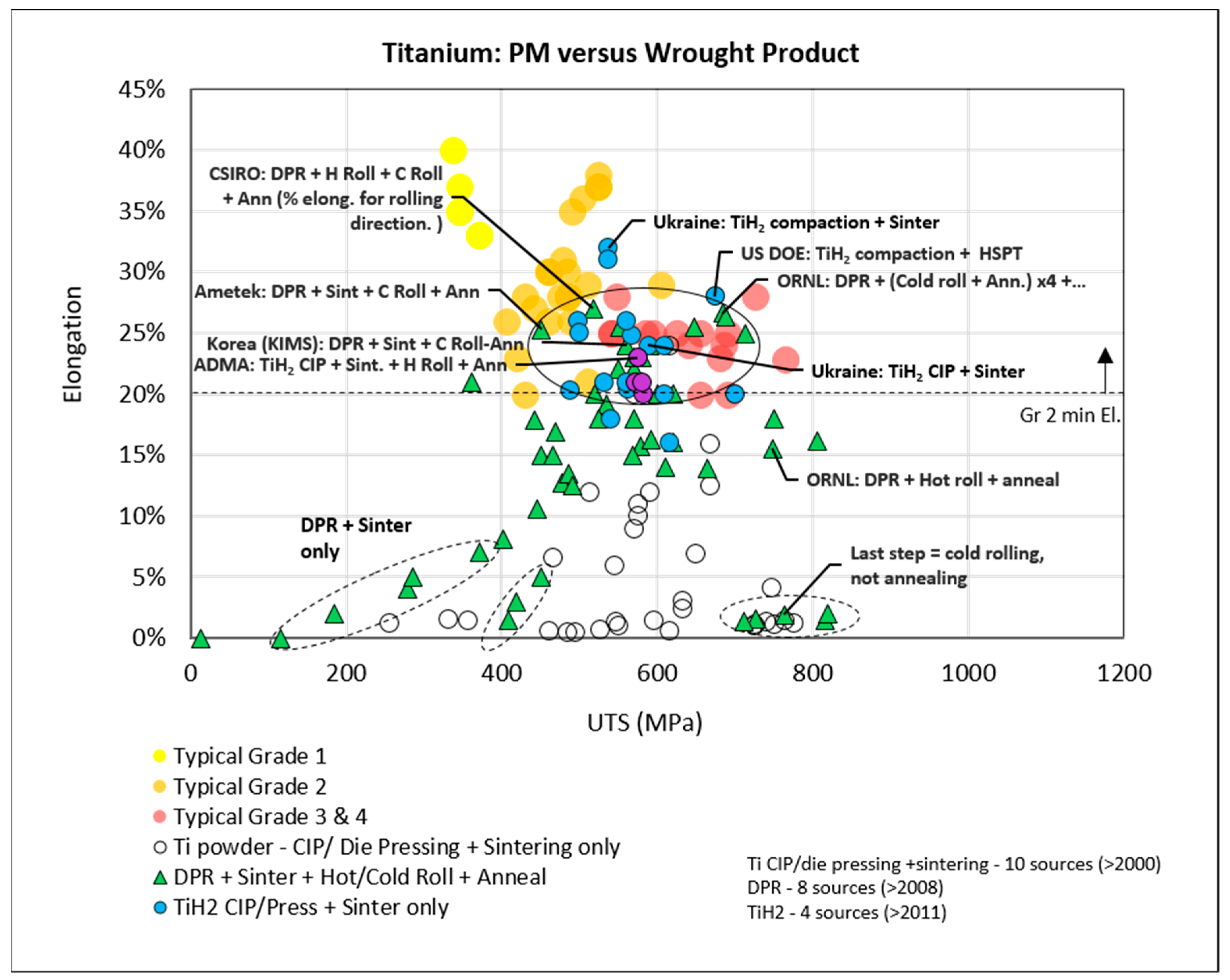


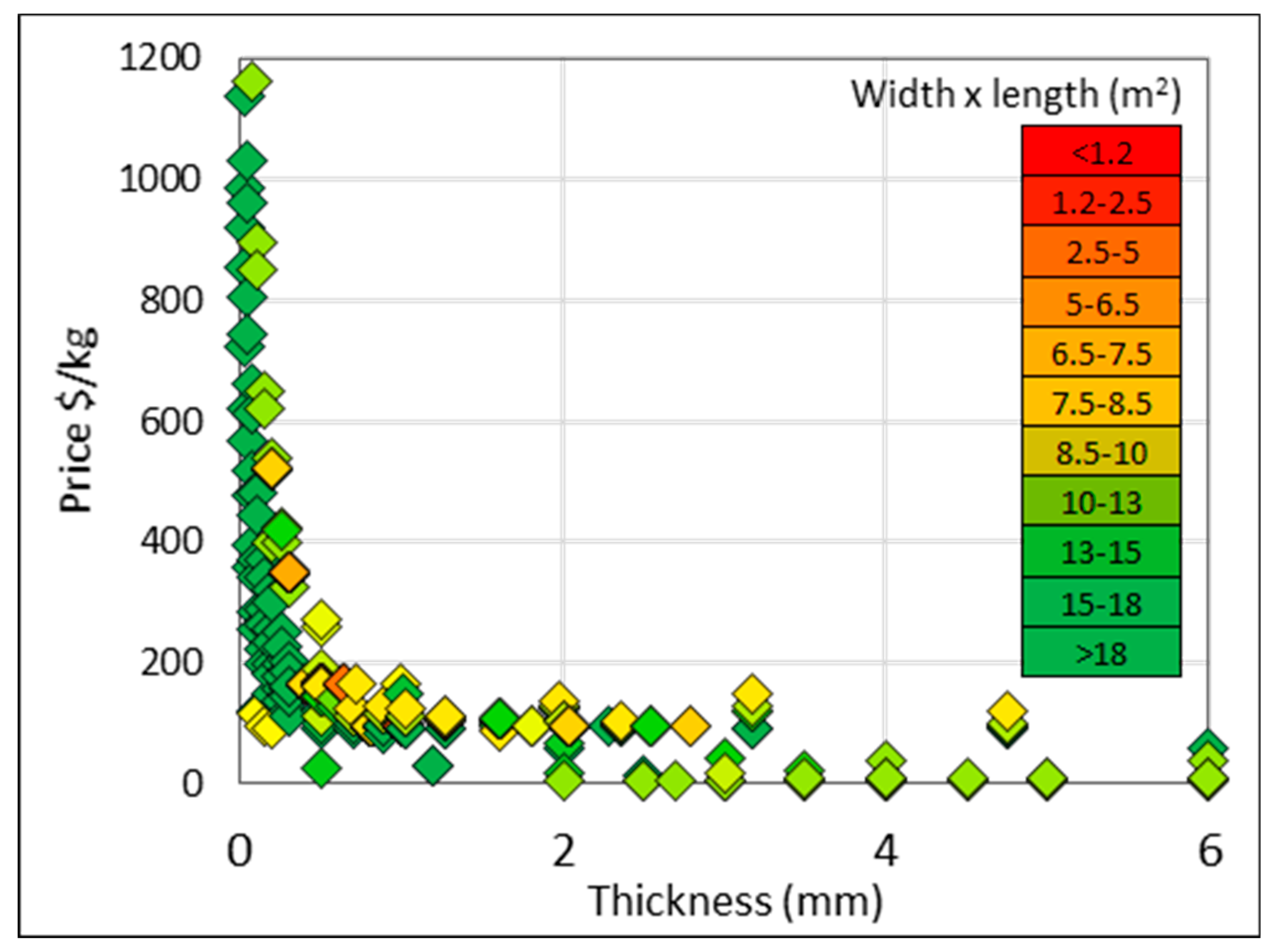

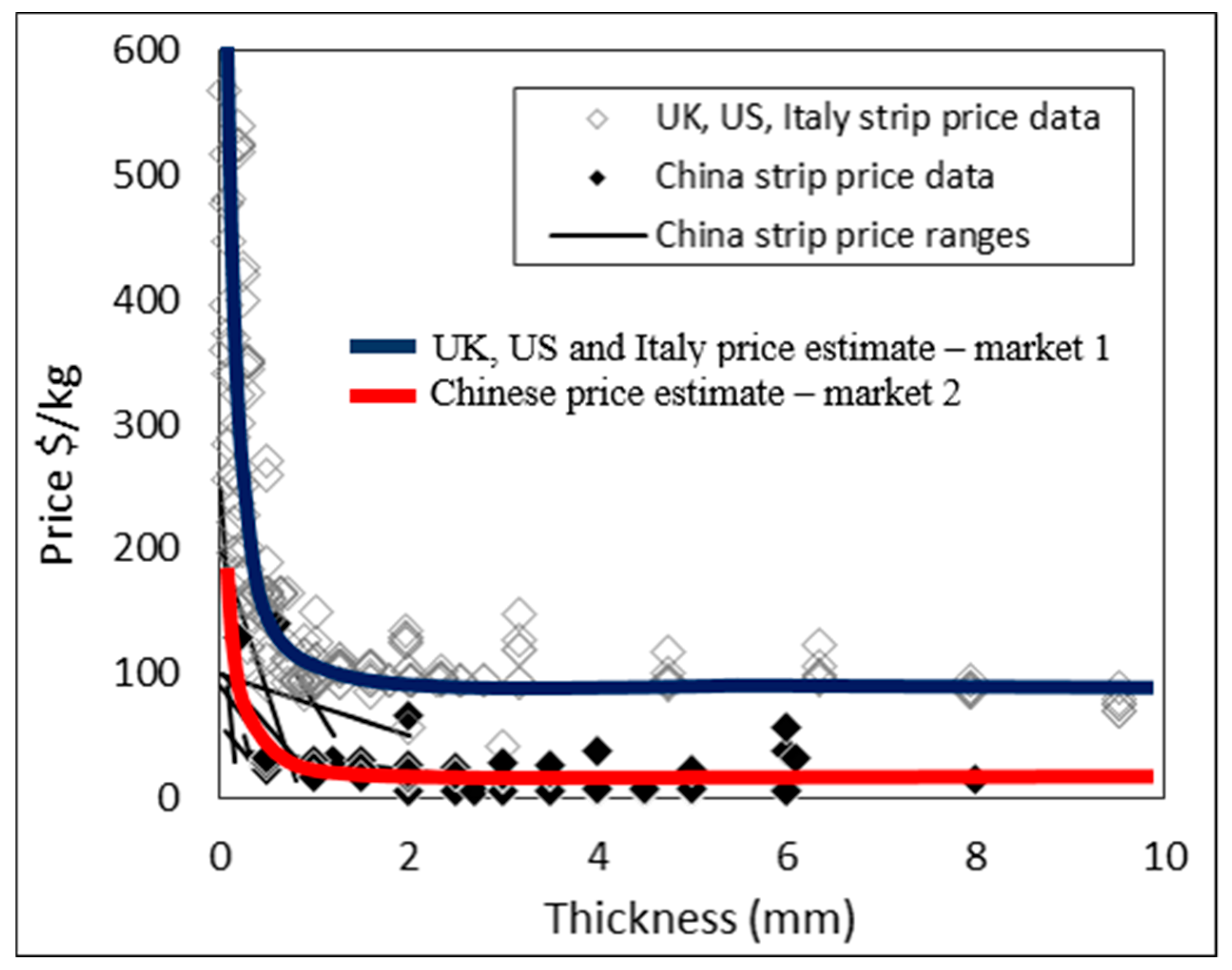
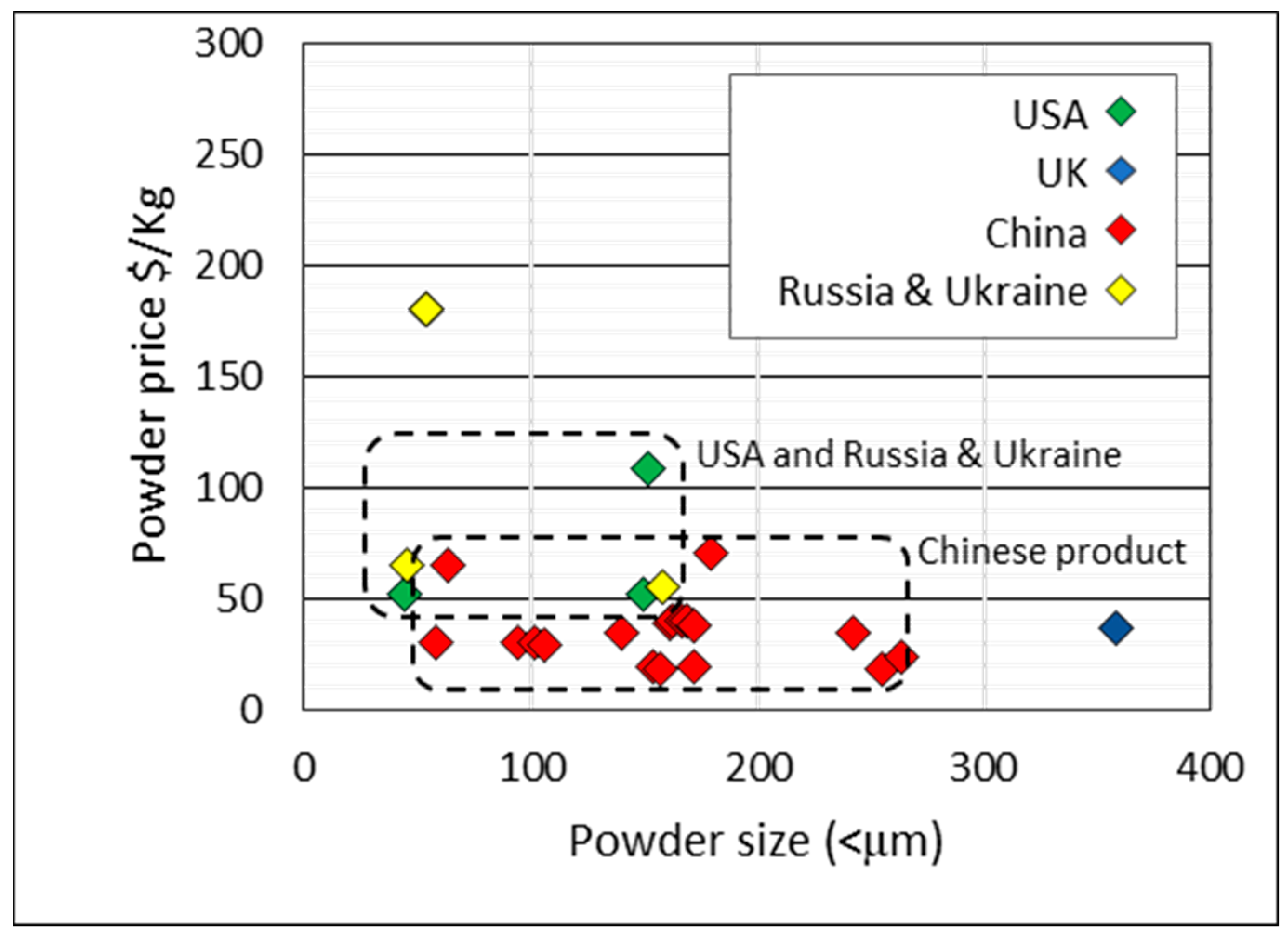


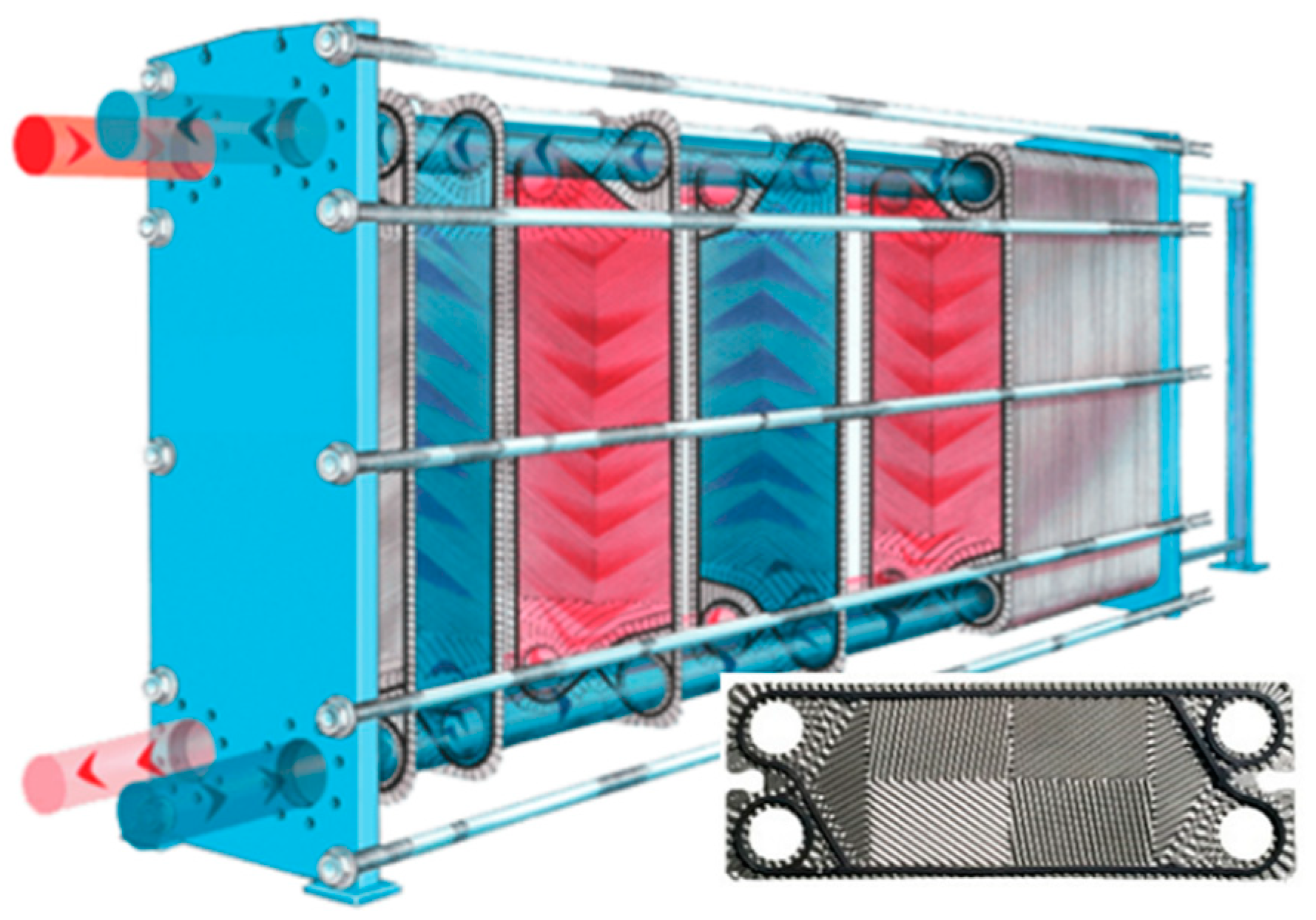
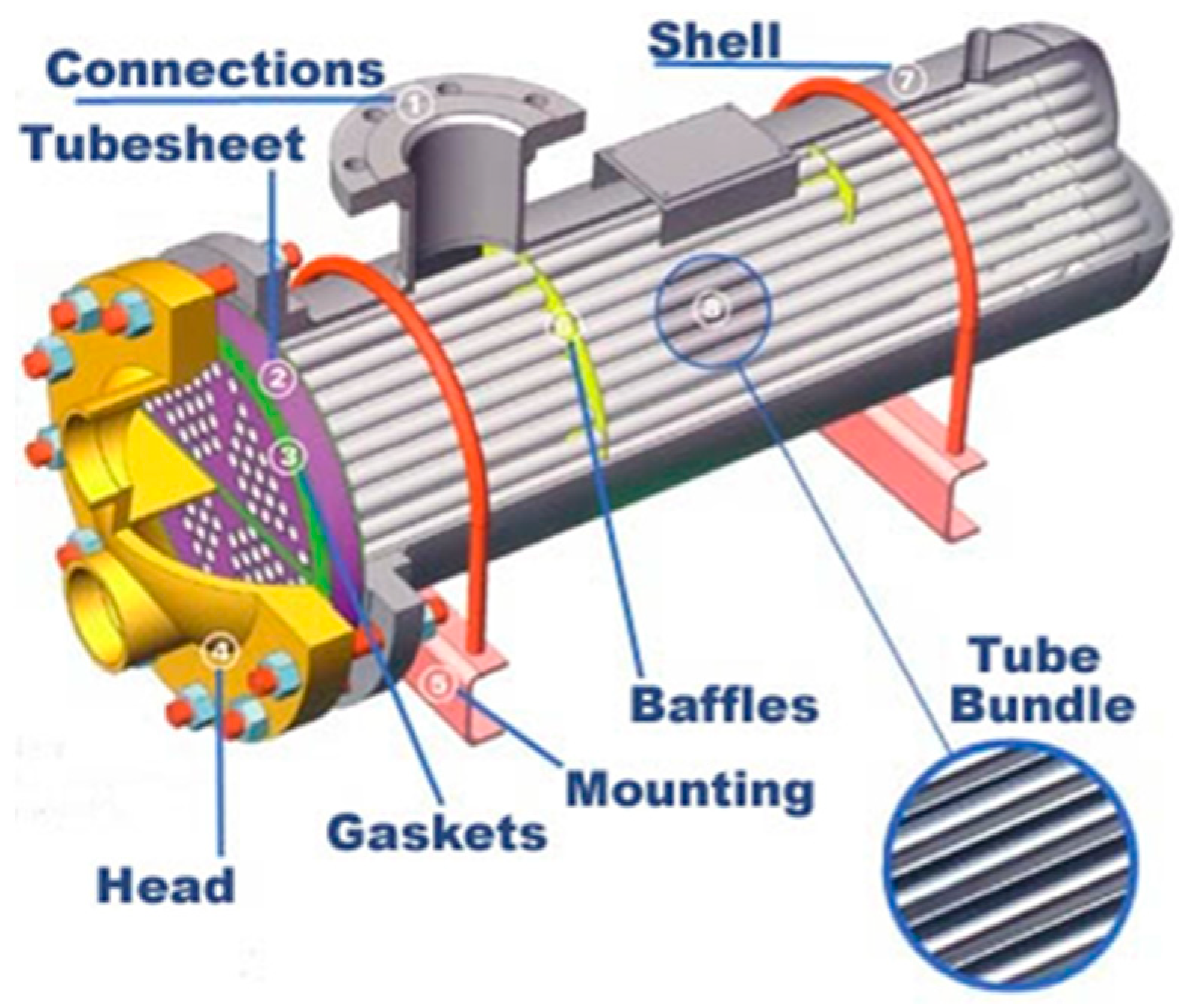

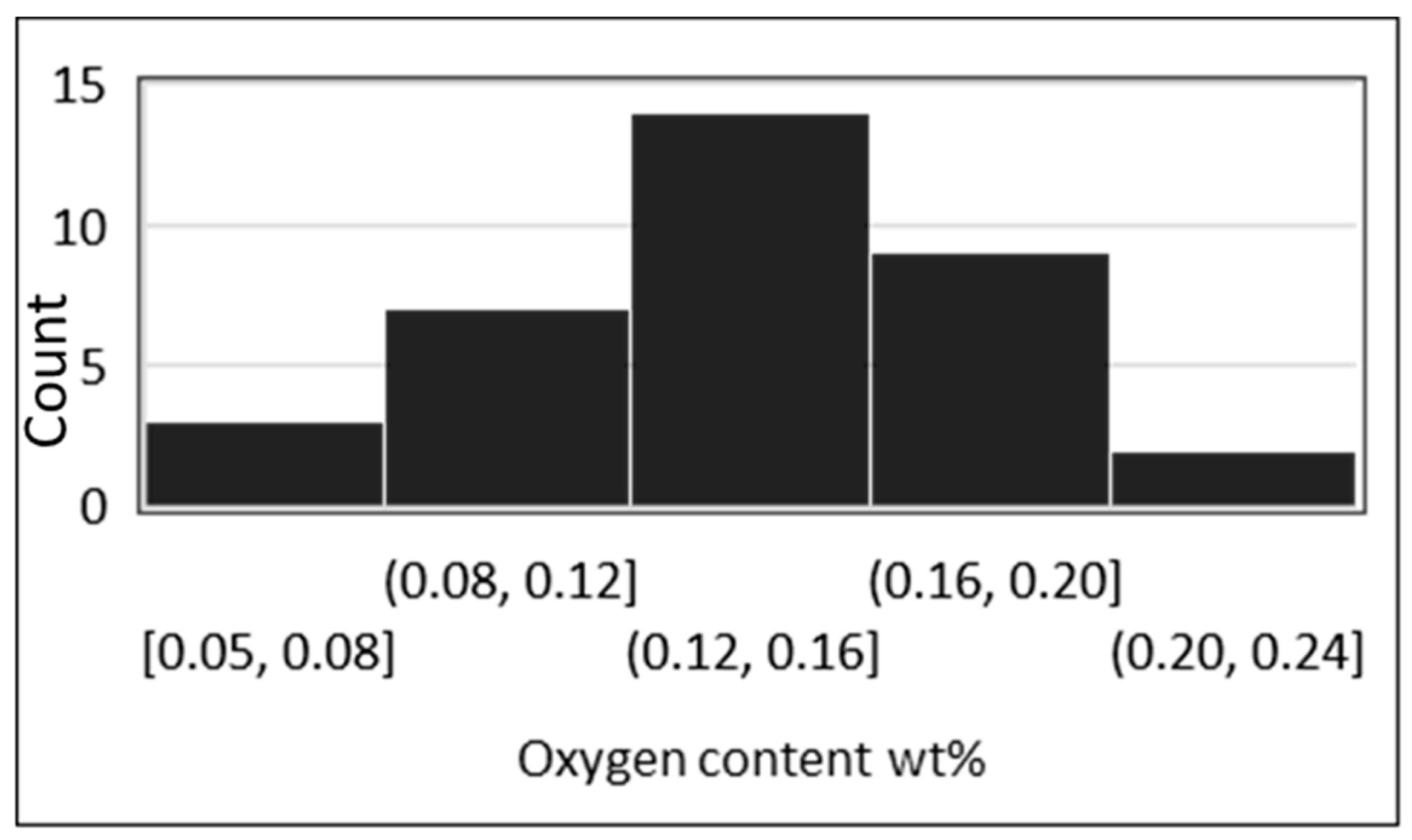
© 2020 by the authors. Licensee MDPI, Basel, Switzerland. This article is an open access article distributed under the terms and conditions of the Creative Commons Attribution (CC BY) license (http://creativecommons.org/licenses/by/4.0/).
Share and Cite
Steytler, M.; Knutsen, R. Identifying Challenges to the Commercial Viability of Direct Powder Rolled Titanium: A Systematic Review and Market Analysis. Materials 2020, 13, 2124. https://doi.org/10.3390/ma13092124
Steytler M, Knutsen R. Identifying Challenges to the Commercial Viability of Direct Powder Rolled Titanium: A Systematic Review and Market Analysis. Materials. 2020; 13(9):2124. https://doi.org/10.3390/ma13092124
Chicago/Turabian StyleSteytler, Megan, and Robert Knutsen. 2020. "Identifying Challenges to the Commercial Viability of Direct Powder Rolled Titanium: A Systematic Review and Market Analysis" Materials 13, no. 9: 2124. https://doi.org/10.3390/ma13092124



